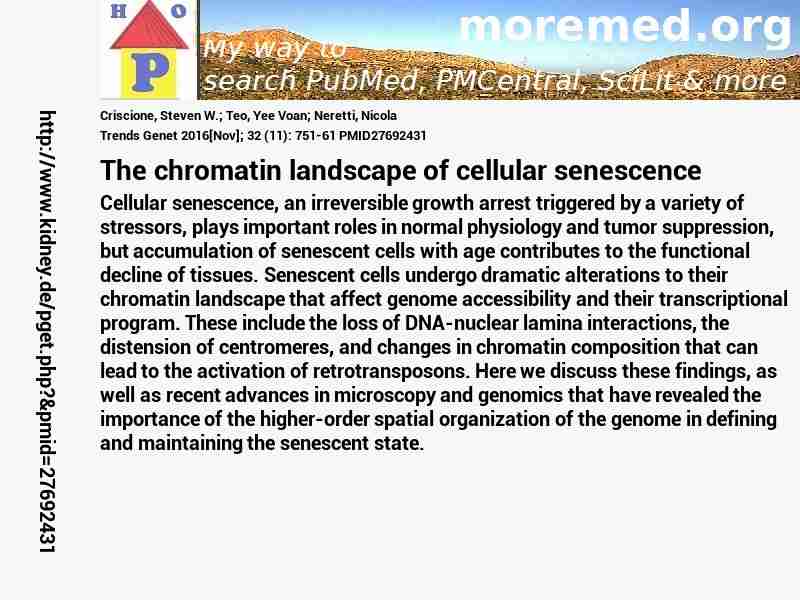
|
10.1016/j.tig.2016.09.005
http://scihub22266oqcxt.onion/10.1016/j.tig.2016.09.005

C5235059!5235059!27692431
 free free
 free free
 free free
Warning: file_get_contents(https://eutils.ncbi.nlm.nih.gov/entrez/eutils/elink.fcgi?dbfrom=pubmed&id=27692431&cmd=llinks): Failed to open stream: HTTP request failed! HTTP/1.1 429 Too Many Requests
in C:\Inetpub\vhosts\kidney.de\httpdocs\pget.php on line 215
|  
Warning: imagejpeg(C:\Inetpub\vhosts\kidney.de\httpdocs\phplern\27692431.jpg): Failed to open stream: No such file or directory in C:\Inetpub\vhosts\kidney.de\httpdocs\pget.php on line 117
 Trends+Genet 2016 ; 32 (11): 751-61 Trends+Genet 2016 ; 32 (11): 751-61
Nephropedia Template TP
gab.com Text
Twit Text FOAVip
Twit Text #
English Wikipedia
|
The chromatin landscape of cellular senescence #MMPMID27692431Criscione SW; Teo YV; Neretti NTrends Genet 2016[Nov]; 32 (11): 751-61 PMID27692431show ga
Cellular senescence, an irreversible growth arrest triggered by a variety of stressors, plays important roles in normal physiology and tumor suppression, but accumulation of senescent cells with age contributes to the functional decline of tissues. Senescent cells undergo dramatic alterations to their chromatin landscape that affect genome accessibility and their transcriptional program. These include the loss of DNA-nuclear lamina interactions, the distension of centromeres, and changes in chromatin composition that can lead to the activation of retrotransposons. Here we discuss these findings, as well as recent advances in microscopy and genomics that have revealed the importance of the higher-order spatial organization of the genome in defining and maintaining the senescent state.�
  
DeepDyve
Pubget Overpricing | 
|